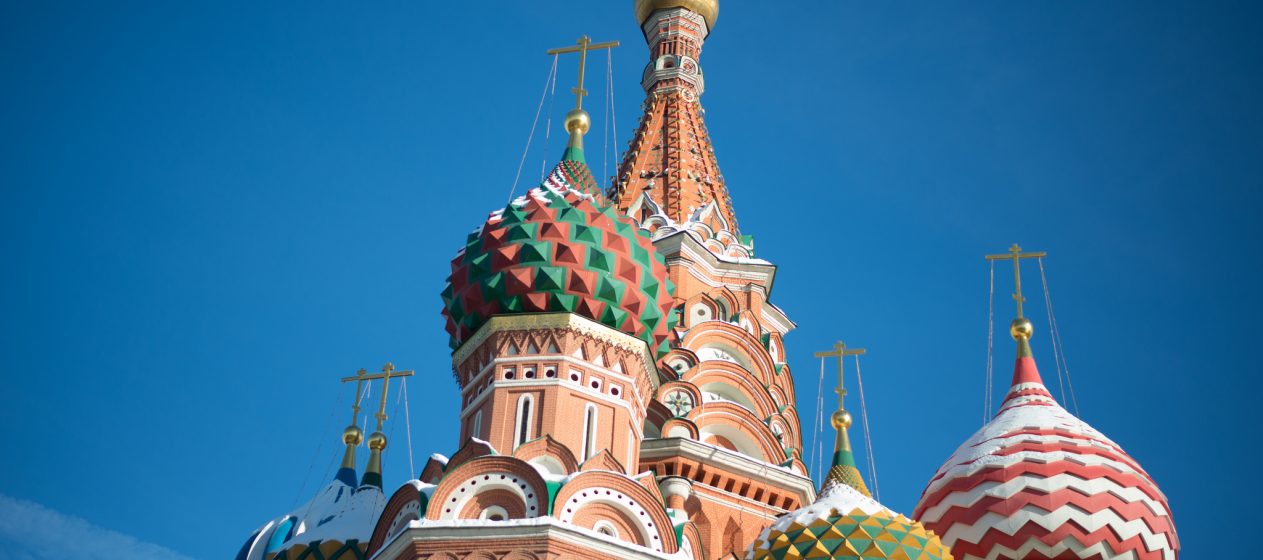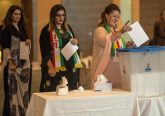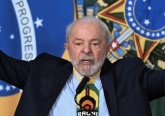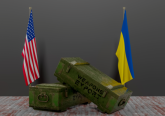On Sept. 18, Russians went to the polls to elect the State Duma — the lower chamber of the bicameral Federal Assembly. In an earlier post, I set out what to expect from the vote. In this post, I discuss what to make of the results. The first session of the Duma’s seventh convocation will take place Wednesday.
Here are six things you need to know.
1) United Russia, the pro-Putin “party of power,” won a supermajority.
United Russia (UR) will take 344 out of 450 Duma seats. UR candidates secured pluralities in 203 of the 225 single-mandate races. The party also received 140 of the 225 positions that were elected via a nationwide contest, in which seats are assigned in proportion to each party’s percentage of the vote. The one formally independent candidate to win a seat in the Duma, Vladislav Reznik, will join the United Russia parliamentary faction.
This amounts to a “constitutional majority.” In other words, the party has a enough deputies to pass changes to the Russian Constitution without any support from other parties. United Russia improved significantly on its showing in the 2011 elections, when it won 238 seats, and also its 2007 showing, when it won 315 seats.
That being said, this changes little in practice. During the 2011-2016 parliamentary session, the Kremlin often engineered supermajorities with votes from loyal opposition Duma deputies.
And yet having a supermajority does matter. Research on Mexico’s Institutional Revolutionary Party has shown that parliamentary supermajorities help project an “image of invincibility,” demoralizing both the opposition and potential defectors from the ruling party.
As expected, three other parties won most of the remaining Duma seats this year: the Communist Party of the Russian Federation (42 seats), the Liberal Democratic Party of Russia (39 seats) and A Just Russia (23 seats). Rodina and Civic Platform both secured one seat each.
Several foreign governments have refused to recognize the legitimacy of the votes cast in Crimea, which was annexed by Russia from Ukraine in 2014.
2) Low voter interest translated into low turnout.
Overall, only 47.9 per cent of the electorate turned out to vote, down from 60.2 per cent in 2011. This national figure, however, masks distinct regional variation. Chechnya saw the highest turnout, with 94.9 per cent, and St. Petersburg the lowest, with 32.5 per cent.
The low turnout means that UR actually received 4 million fewer votes in 2016 than in 2011, despite capturing a far greater share of Duma seats in the latest elections.
3) There was evidence of electoral fraud …
Videos of ballot stuffing were widely shared on the day of voting. And the Russian election monitoring organization, Golos, produced a “map of violations,” recording reports of electoral infringements, both in Russia and abroad.
At the same time, Golos reported that the raw number of electoral abuses was down compared with 2011. And in its preliminary report from Sept. 19, the Organization for Security and Cooperation in Europe (OSCE) praised the “transparency and professional manner” of Russia’s Central Election Commission.
Subsequent analysis of voting data suggests, however, that the picture might not be so rosy. Physicist Sergei Shpil’kin claims, for example, that United Russia was only supported by 15 per cent of voters. Although there has been a concerted effort to make the electoral process seem fairer in Russia since 2012, some commentators have claimed that officials have simply become better at falsifying results.
4) … but, as expected, there was no rerun of the 2011-2012 demonstrations.
Despite this evidence of foul play, Russian citizens did not go to the streets, as they did after 2011’s federal parliamentary elections.
The Communist Party had planned to hold demonstrations following the elections if evidence of mass falsification came to light. But party leader Gennady Zyuganov recognized the Duma results soon after the vote, effectively removing the basis for demonstrations.
5) There’s been a shakeup among the deputies.
More than 50 per cent of the new body of deputies did not serve in the 2011-2016 Duma. Partly in response to this large proportion of new faces, United Russia will put on a two-day workshopon lawmaking and budget policy to train their new legislators.
With the mixed electoral system used for the Sept. 18 elections, 225 Duma deputies were selected as individuals by particular constituencies. These deputies will probably face competing pressures when Kremlin, party and regional interests diverge.
As they keep an eye on trying to win reelection in 2021, these odnomandatniki (“single mandate” deputies) will have clear incentives to respond to constituent and regional elite concerns, particularly in campaign season.
But the voice of another constituency has been dampened in the Duma. Fewer businessmenwere included in party election lists. In addition to having their own business interests, these deputies have also behaved as lobbyists for economic interests in previous Duma sessions. With them gone, the Duma has a larger share of loyal party functionaries. That should make it easierfor the executive and party elite to control deputies’ votes.
At the same time, intra-party difference will be institutionalized. United Russia’s parliamentary faction will be split into five groups, although the basis for these groups — ideological or regional, for example — is not yet clear. Such intra-party groups are not novel, however. Four groups of United Russia deputies were formed in the 2011-2016 Duma.
The first major test for party unity will be the passage of the budget, the government’s draft of which must be introduced into the Duma by Nov. 1 and will be signed into law in December.
Finally, despite United Russia’s commanding majority, 13 of 26 Duma committee chairmanships will go to opposition parties. Why would the “party of power” not keep all of these posts for itself?
The goal may be to co-opt members of the opposition. Political scientists Ora John Reuter and Graeme Robertson argued in a 2015 article that leadership positions in authoritarian legislatures are given to opposition parties in an attempt to reduce social protest. According to this logic, opposition elites promise to demobilize their supporters in exchange for access to money and resources through parliamentary committee posts.
The story might, however, be much simpler for the current Duma. With United Russia’s commanding majority, sharing committee chairs is one straightforward and symbolic way to try to allay fears of a one-party legislature. Further, this may help spread blame for the difficult decisions that will need to be taken in Russia’s current economic situation.
6) All eyes will now turn to the presidential elections.
The next presidential elections in Russia are slated for 2018. There have been suggestions, however, that this vote might be brought forward to spring 2017. President Vladimir Putin has not yet declared his candidacy, although most commentators expect him to run for a fourth term.
Putin’s approval rating remains about 82 per cent. The task in the run-up to the presidential elections will be to maintain this level of support, while raising the turnout to underscore the voting result’s legitimacy.
With this mobilization in mind, the All-Russia People’s Front (ONF) – a Kremlin-crafted political movement, founded in 2011 — has recently become more prominent after lying low during the Duma election campaign season. Members of the ONF — including 90 Duma deputies — will be tasked with activating Putin’s support base.
Although United Russia ran on “the party of the president,” Putin is not formally a party member. He is, however, the founder and leader of ONF — an organization that is largely untainted so far by the cases, and allegations, of corruption that have plagued UR.
This article was first published on 1st October 2016 in The Monkey Cage at the Washington Post under the title “Putin just won a supermajority in the Duma. That matters“.







